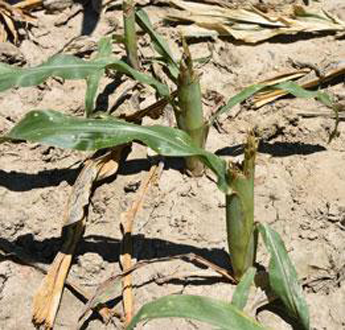White-tailed Deer
Deer
Deer Information:
Click on the following links to learn more:
Managing White-tailed Deer Problems in Kentucky
Deer are a valuable natural resource in Kentucky, providing many hours of enjoyment for the public. The white-tailed deer (Odocoileus virginianus) is the most sought after big game animal in North America. High deer populations in rural and suburban areas can cause damage to orchard trees, soybean or corn fields, and vegetable crops, backyard gardens, ornamental plants, and also forest regeneration issues. High deer populations also contribute to the many deer/vehicle collisions on our highways. While most of us enjoy seeing deer, sometimes it is necessary to manage the herd in an effort to reduce the damage they can cause. Unlike chipmunks, moles, starlings, pigeons, or other nuisance wildlife, deer cannot be casually eliminated when they come into conflict with a landowner's intended land use. Thus, deer damage management becomes a social and political problem as well as a biological and logistical problem.
Biology Related to Damage
White-tailed deer lack upper incisors which results in a distinctive feeding pattern that looks like the plant was torn. Rabbits and rodents, on the other hand, make a sharp, clean, knife-like cut on plants.
Whitetails breed from October through January. Peak breeding activity in Kentucky usually occurs in mid-November. Females cycle every 28 days and will remain in heat for 24 hours. One buck may mate with a number of does and no pair bonds are formed. Most deer breed their second fall, although about 40% of fawns may breed the first fall. Most healthy adult females will have twins but triplets are not uncommon.
Deer are browsing animals and over 650 different plant items have been identified in their diets. Broadleaved "weeds" or forbs are preferred food items and are eaten whenever available in the spring and summer. Most of the time deer eat the leaves, stems, and buds of woody plants because they are available year round. During the fall, acorns, beechnuts, hickory nuts, persimmon fruits, and other nuts or berries are favorite food items. The soybean plant is a highly preferred food for white-tailed deer. They also relish other agricultural crops such as corn, grain sorghum, milo, and alfalfa.
Summary
Deer damage complaints and conflicts will likely continue as long as we have healthy deer populations. Perhaps the best way for a grower to co-exist with deer is to consider the benefits of the deer resource and treat deer as another crop (economic asset) of the land. By allowing regulated hunting you provide people with access to a public resource while at the same time reducing deer damage problems and reaping economic rewards. Contact your county agent for more information on lease hunting.
For more detailed information refer to the published fact sheet FOR-57 MANAGING WHITE-TAILED DEER PROBLEMS IN KENTUCKY ISSUED: 10-93

Corn Damage
Deer are browsing animals and over 650 different plant items have been identified in their diets.
